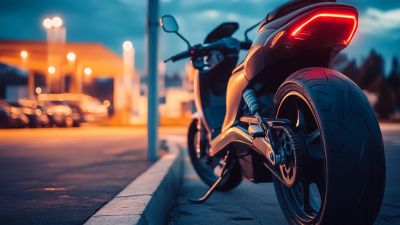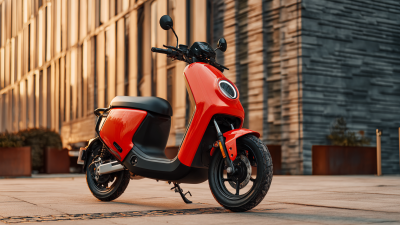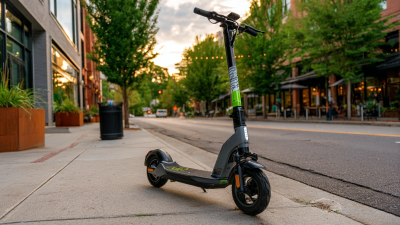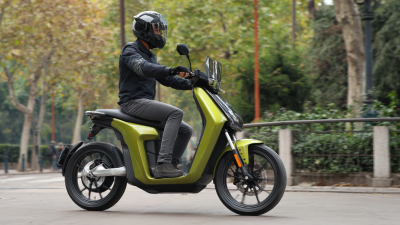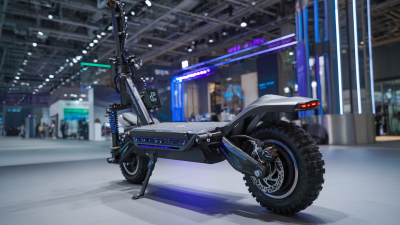As urban mobility continues to evolve, the demand for sustainable and efficient transportation options is skyrocketing, leading to the rise of Electric Motorcycles and Scooters. According to a report by Fortune Business Insights, the global electric motorcycle market size is projected to grow from $25.7 billion in 2021 to $75.4 billion by 2028, reflecting a compound annual growth rate (CAGR) of 16.3%. This remarkable growth is fueled by the increasing emphasis on reducing carbon emissions, coupled with advancements in battery technology and charging infrastructure. Consumers are increasingly captivated by the advantages electric two-wheelers offer, including lower operational costs and enhanced convenience. As we delve into the world of electric motorcycles and scooters, we will explore the top contenders that are poised to transform your ride, making them not just a trend but a sustainable choice for the future of transportation.

The electric motorcycle market has become a compelling alternative to traditional bikes, driven by increasing awareness of environmental sustainability and a shift in consumer preferences. Recent industry reports indicate that the global electric two-wheeler market is projected to reach a staggering $144 billion by 2024, fueled by a compound annual growth rate (CAGR) of 6.3% from 2025 to 2034. This growth is largely attributed to the rising demand for eco-friendly transportation solutions as urbanization intensifies and pollution levels rise.
Electric motorcycles are notably enhancing urban mobility, with a diverse range of products tailored to various consumer needs. By 2035, electric bikes are anticipated to dominate the landscape, including e-bikes and scooters designed for both commuting and recreational purposes. The proliferation of battery technology, alongside improved performance metrics such as higher battery capacities and efficient hub motor placements, is redefining how we perceive motorcycle performance and sustainability. This transformation signals a pivotal moment in the industry, positioning electric motorcycles as a mainstream option in the quest for greener transportation methods.
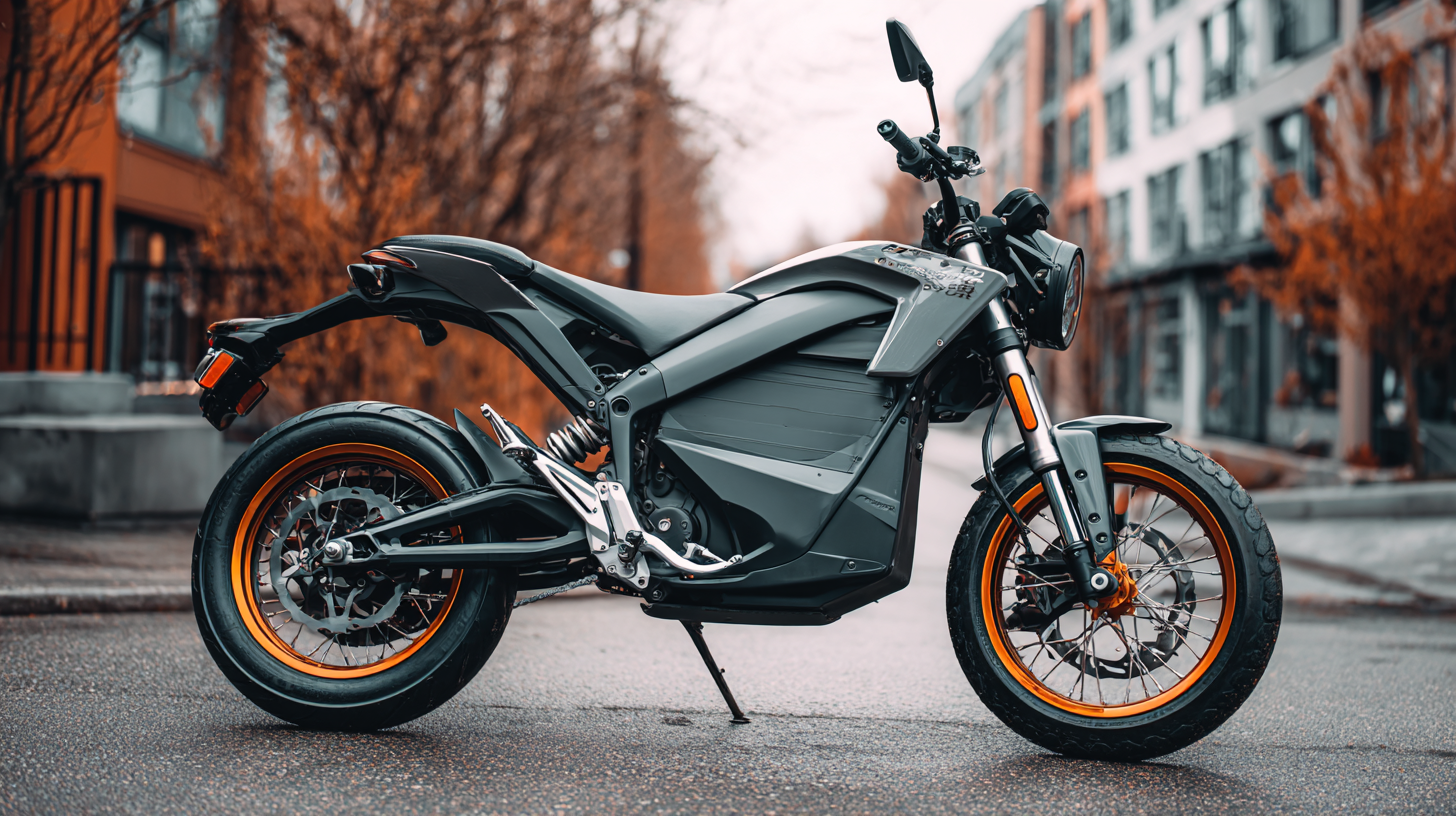
The rapid evolution of electric scooters is driven by innovative technologies that are reshaping urban mobility. Recent innovations presented at major expos highlight the importance of smart materials and energy solutions in enhancing safety and sustainability. For example, a new electric scooter model utilizes advanced plastronics, showcasing how materials science can significantly improve vehicle design and functionality. This approach not only enhances rider safety but also contributes to the overall sustainability of urban transportation.
Tips: When considering an electric scooter, look for features that prioritize safety, such as improved braking systems and smart technology. Additionally, pay attention to battery technology; options like organic proton batteries and sodium-ion batteries are emerging as viable alternatives that promise to enhance efficiency and reduce environmental impact. As cities continue to grow, these advancements will play a crucial role in meeting the demands of urban commuters seeking greener transportation solutions.
The push towards helmet-free designs and self-balancing technologies signifies a shift in how we perceive electric mobility. These developments point to a future where scooters not only serve as a convenient transport option but also adapt effortlessly to the urban environment, making them a preferred choice for many city dwellers. Investing in the right electric scooter can transform your daily commute into an enjoyable and sustainable experience.
The electric motorcycle market is rapidly evolving, offering a diverse range of models that combine innovative technology with impressive performance. Among the top contenders, the Zero SR/F stands out with its remarkable battery efficiency and powerful electric motor, providing riders with a thrilling top speed of 124 mph. Its high-torque output ensures a responsive ride, while the advanced regenerative braking system enhances both safety and range, making it an ideal choice for urban commuting and weekend adventures alike.
Another impressive model is the Harley-Davidson LiveWire, which brings iconic styling into the electric realm. With a 0-60 mph acceleration in just 3 seconds, it clearly demonstrates that electric bikes can deliver exhilarating performance. The LiveWire features a robust suite of connected technologies, allowing riders to access real-time data and customizable settings, thus enhancing the overall riding experience. Additionally, with a range of about 146 miles on a full charge, it effectively balances performance with practicality for everyday use. Each model in this new wave of electric motorcycles combines cutting-edge features to redefine the future of personal transport.

Urban mobility is undergoing a transformative shift with the rise of electric scooters and motorcycles. According to a recent report by the International Energy Agency (IEA), electric two-wheelers are projected to account for over 60% of all two-wheeler sales by 2030. This rapid adoption is fueled not only by advancements in battery technology but also by increasing environmental awareness. Electric scooters and motorcycles offer a sustainable alternative to traditional gas-powered vehicles, reducing greenhouse gas emissions and urban pollution significantly.
In addition to their environmental benefits, electric scooters and motorcycles enhance urban commuting efficiency. A study from Statista shows that the adoption of electric scooters has increased by nearly 250% in metropolitan areas since 2019, helping to alleviate traffic congestion and improve air quality. Furthermore, the operational costs for electric two-wheelers are markedly lower, with maintenance costs reduced by up to 50% compared to their combustion engine counterparts. This combination of cost efficiency and enhanced urban sustainability positions electric scooters and motorcycles as key players in reshaping our transportation landscape.
The electric two-wheel market is on the brink of a significant transformation, driven by rapid advancements in technology and shifting consumer preferences. According to a report by Research and Markets, the global electric motorcycle and scooter market is expected to grow from $24.6 billion in 2022 to over $48 billion by 2030, reflecting a compound annual growth rate (CAGR) of 9.1%. This growth is primarily fueled by increasing urbanization, rising fuel prices, and government initiatives aimed at reducing carbon emissions, which are all pushing consumers toward more sustainable transportation options.
Future trends indicate that the integration of smart technologies will play a crucial role in the evolution of electric two-wheelers. Features such as connected devices, advanced battery management systems, and real-time data analysis will enhance the rider’s experience, providing better safety and performance insights. Additionally, experts predict that solid-state batteries, which offer higher energy densities and faster charging times, will become commercially viable within the next five years. As manufacturers invest in these innovations, consumers can expect to see longer ranges and improved reliability in electric motorcycles and scooters, ultimately making them a more attractive alternative to traditional gasoline-powered vehicles.
